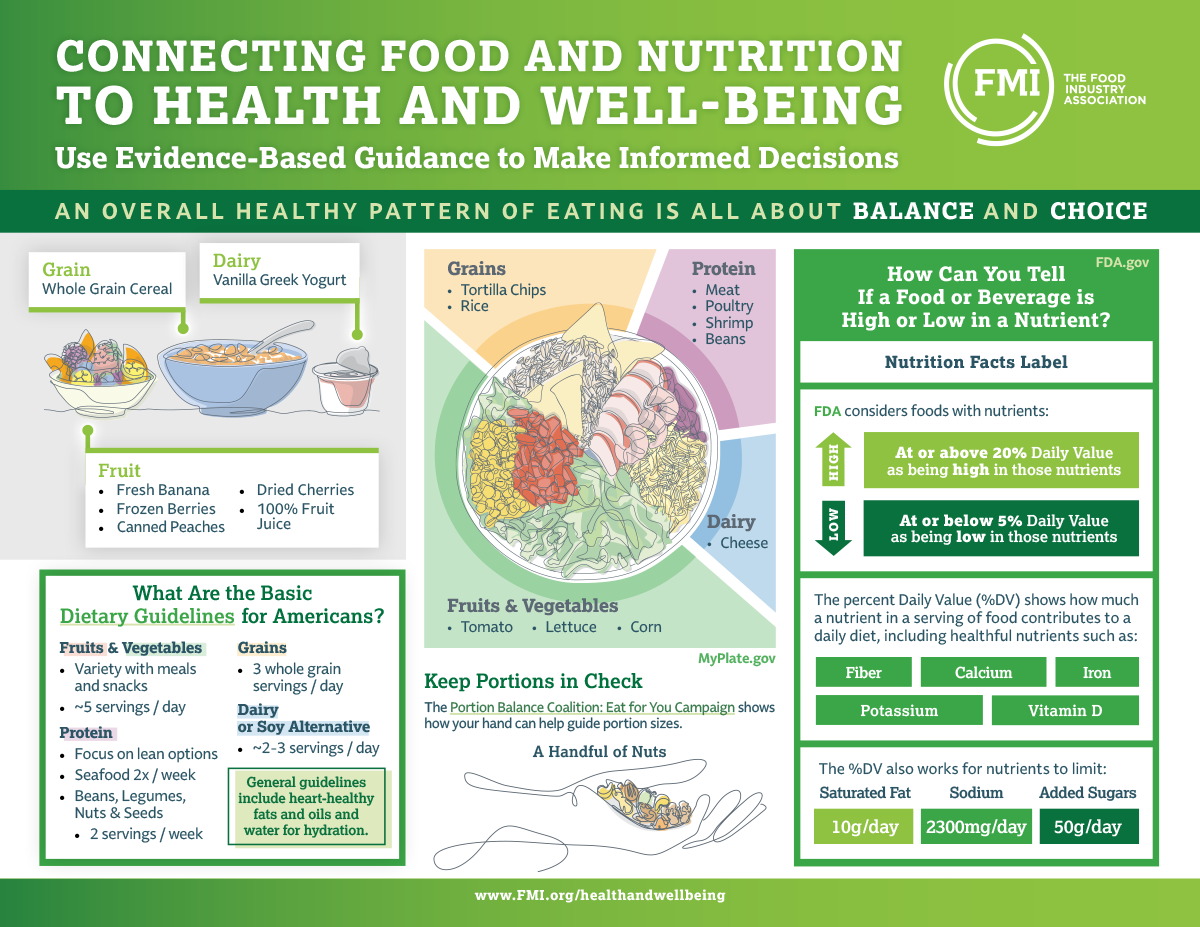<p>By: Krystal Register, MS, RDN, LDN, Vice President, Health & Well-being, FMI</p><p>Consumers are bombarded daily with conflicting information about food and nutrition. Advice is often not based on science, and it can be difficult to determine what is credible and what is not. FMI and our members believe that keeping evidence-based messaging front and center is imperative when communicating with consumers about nutrition, health and well-being. We have general federal guidelines based on the latest science to help connect the science of food and nutrition to health. These guidelines all work together to help build an overall healthy pattern of eating which plays out differently for each unique individual. There is no right or wrong, no one-size-fits-all recommendation; rather, it is about balance and choice.</p><p>We are excited to share a comprehensive tool to support industry-wide nutrition and health initiatives. The goal of this one-page infographic is to bring together science-based guidance on food, portions and labels with multiple links for more information, connecting established healthy eating recommendations to promote informed shopping and eating decisions.</p><p class="-align-center" style="text-align:center;"><a style="margin-top:10px;margin-bottom:10px;" href="https://www.fmi.org/docs/default-source/health-wellness-resources-downloads/fmi-nutrition101-infographic-final.pdf?sfvrsn=787e5cc5_1"><img src="https://www.fmi.org/images/default-source/blog-images/fmi-nutrition-infographic.png?sfvrsn=fd382474_2" alt="Connecting Food and Nutrition to Health & Well-being" sf-size="400018" /></a></p><p>The <a href="https://www.dietaryguidelines.gov/" target="_blank">Dietary Guidelines for Americans</a> show general recommendations based on food groups — the "what" you need to make "every bite count." <a href="https://www.myplate.gov/" target="_blank">MyPlate</a> shows how to build meals and snacks throughout the day with foods you like from each of the food groups. The <a href="https://www.portionbalance.org/campaigntoolkit" target="_blank">Portion Balance Coalition’s Eat for You</a> graphics show fun and simple ways to think about portion sizes for all foods. The <a href="https://www.fda.gov/food/nutrition-facts-label/whats-nutrition-facts-label" target="_blank">Nutrition Facts Label</a> shows more about calories, serving size and the nutrients in foods. The label also shows how to determine if a particular food is high or low in nutrients to either include more of or limit, based on individual needs and goals. </p><p>The FMI commitment on nutrition messaging announced at the 2022 <a href="https://www.fmi.org/government-affairs/white-house-conference-on-hunger-nutrition-and-health">White House Conference on Hunger, Nutrition and Health</a> supports the use of these collective tools to empower consumers to make informed, healthful and personal choices at the grocery store. FMI members met and far exceeded the goal to reach 100 million consumers with evidence-based nutrition messaging by maximizing industry-driven, science-based, community outreach efforts grounded in the Dietary Guidelines, MyPlate, the Nutrition Facts Label and the Eat for You Campaign materials. </p><p><a href="https://www.fmi.org/docs/default-source/health-wellness-resources-downloads/fmi-nutrition101-infographic-final.pdf?sfvrsn=787e5cc5_1" class="button">View and download the FMI Nutrition infographic</a> <a href="https://www.fmi.org/industry-topics/health-well-being" class="button-secondary">Health & Well-being Resources</a></p>
[#item_full_content]




